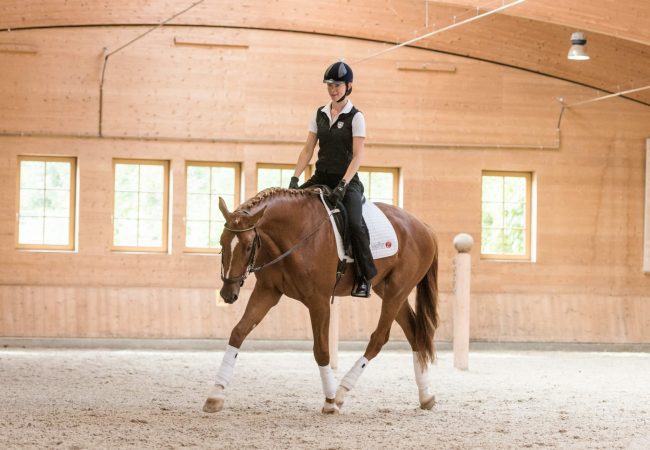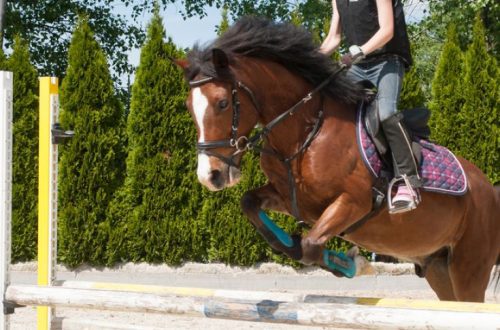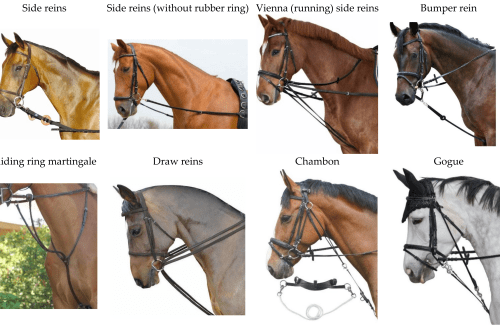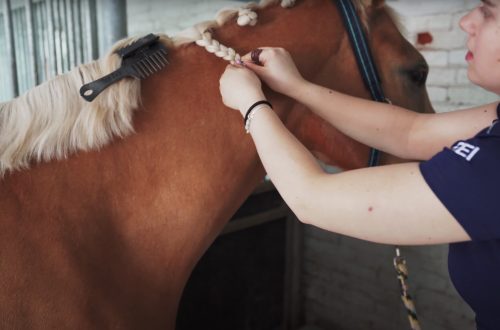
Anja Beran: create your dressage fit
Anja Beran: create your dressage fit
Horses are comfortable working with partners who give them clear and understandable signals and messages. Only a balanced and relaxed rider can allow the horse to move harmoniously. But why do so many riders get back pain after riding uncooperative and nervous horses? Why do horses often not respond to messages or misunderstand them? To answer these questions, we need a complete individual assessment of the mounted rider. But before analyzing how the rider moves while riding, we need to evaluate his position at rest and make corrections as needed.
Basic anatomy
Human skeleton.
To understand how the rider’s posture affects the horse and how the horse affects the rider in response, we must look at the anatomy of the human body. The basic anatomy of the upper body is especially important. We will talk about it in order to facilitate understanding of the complex processes occurring in the body.
The spinal column consists of 7 cervical, 12 thoracic and 5 lumbar vertebrae, as well as the sacrum and coccyx. When viewed from the side, the spine is shaped like a double “S”. This form serves for depreciation during loads.
Spine, side view.
The vertebrae are connected to each other by muscles and tendons, mobile in vertebral contacts and separated by discs. The discs are gelatin-like cores enclosed in an elastic fibrous ring. The vertebrae also have a cushioning function. Thanks to the S-shape, the spine is mobile and has a resilient, springy action that protects individual structures and provides an effective range of motion controlled by the muscles.
The ribcage protects the internal organs and plays an important role in breathing. It consists of ribs that are attached to the thoracic vertebrae at one end and to the sternum at the other. This structure supports the thoracic spine. The lower ribs are not directly connected to the sternum and are attached to the cartilage. During inspiration, the distance between the ribs increases (the ribs are “open”). During exhalation, it decreases (the ribs are “closed”).
The shoulder girdle consists of the collarbone, which runs from the sternum to the shoulder blade and connects the arms to the body through the shoulder joints, which providesоgreater mobility.
The pelvis consists of two femurs attached to the sacrum, two sitting bones, and a pubic bone. Its two halves are connected in front by a strong connective tissue – the pubic symphysis (pubic articulation).
Muscles are responsible for all movements. Some are under our conscious control, some work unconsciously. Muscles can contract and relax. They work in pairs so the previously contracted muscle can return to its original length to contract again. While riding, speaking of the shoulder, you will need the chest muscles in front and the opposite muscles that attach to the shoulder blade and pull back and down. At the top of your arm, you need the muscles that raise and lower your arm. At the elbow and wrist, you need flexors and extensors. In the trunk are the longitudinal oblique and diagonal muscles of the back, sides and abdomen. In the hip, we use the extensors and flexors and the muscles that rotate the hip in and out, as well as the abductors and adductors. The muscles of the knee, lower leg and foot work in the same way as the muscles of the arms.
The whole system of components that “carry” the body and “move” the body is very complex and requires the individual components to be completely synchronized. How the movement is carried out depends on the quality of the individual components, such as muscle mass, the quality of the joints, the stability of the tendons and ligaments, and the starting point of the movement.
So, is there a specific posture where all actions (muscle tension, movement, relaxation and return) are performed in a healthy, efficient and harmonious way? Yes, it’s straight!
Straight position (posture)
A position in which all the components of your spinal column and structures attached to it are in a relaxed state, from which movement in all directions is possible and to which the body returns, is considered an upright posture.
First of all, to get a general idea of the position of the upper body, we will focus on the position of the head, torso and pelvis.
What thoughts arise when the phrase “straight posture”? Your spine should be curved into what is known as a double “S” to provide the benefits mentioned above and allow movement from a relaxed position.
The upper body (head and spine) is “divided” into three building blocks: the head, chest, and pelvis. They “stand” on top of each other, forming a double “S”.
· Block “Head” includes the skull and cervical vertebrae.
· The “Chest” block includes the thoracic vertebrae, ribs, sternum, shoulder girdle and shoulder joints.
· The Pelvis block includes the lumbar vertebrae, pelvis and hip joints.
Seen from front and back, the line of the shoulders should be parallel to the line of the pelvis. Both lines are parallel to the ground. Any deviation of any of the three building blocks (forward, backward, sideways, twisting) disrupts your upright posture and results in a poor starting position for movement, which in turn upsets the balance and results in disorganized interaction between rider and horse.
How to achieve correct posture?
Following exercise describes how to develop an upright posture. To control this position on a horse or in motion, you will need a longer period of practice, so start training while standing on the ground:
1. Stand sideways in front of a large mirror. You must watch every step of the exercise.
2. Place your feet parallel and slightly wider than your shoulders, bend your knees slightly. This corresponds to the position you take while sitting on a horse.
3. Place your hands on both sides of your pelvis and move it back and forth without moving the rest of your body. Imagine that your basin is a bowl filled with water and you are spewing the water out by swinging the bowl back and forth.
4. Find the middle position where the water in the bowl will be at rest. This is the neutral position of the pelvis, from which you can move forward or backward and to which the pelvis returns. This is the main movement while riding. The pelvis connects you to the movement of the horse.
5. Raise your chest diagonally forward and up. Imagine that your chest is stretching diagonally forward and upward.
6. Place your hands on the sides (sides) of your chest and inhale and exhale deeply to feel the movement of the ribs. With a deep exhalation, the ribs close, and the position is held by the tension of the upper abdominal muscles, while the sternum stretches as diagonally forward and upward as possible. You are essentially breathing from your belly (diaphragm) into the sides of your chest and the back of your ribs (back). The middle building block is held plumb and remains exactly above the pelvic block.
7. Let your arms hang freely along your body, your shoulders in a relaxed neutral position, and your shoulder blades down. Imagine that you want to insert your shoulder blades into the back pockets of your trousers. Your shoulder girdle should now be directly above your pelvis. There should be no rotation in the body.
8. Straighten your head by slightly pulling your chin back (slight double chin effect). The head is now in a neutral position between forward and backward movement. The cervical, as well as the thoracic vertebrae, stretch upward, while maintaining the physiological curvature.
Correct posture: neutral position.
Now you are in a straight position. It is from it that all your movements should come. After each movement, the “components” return to this neutral position. This posture allows for the greatest possible mobility in all directions. An added benefit is that your muscles are not in a contracted state prior to movement. This allows the rider to move optimally, tensing and relaxing. deliberately.
If you are in the wrong position when you are about to start moving, you will quickly reach the end point of your movement. The movement will not be smooth, and an improperly distributed load will create stress that can theoretically lead to damage to the discs and joints. Since the horse under the tense rider also experiences discomfort, he begins to resist.
Riding consists of a constant exchange of impulses and signals from both sides. Habitual errors of posture and deviations from an upright posture should be analyzed and corrected.
Wrong postures and how to correct them
Now that you know how to represent correct posture, you need to analyze your individual problems. Only when you are aware of the shortcomings of your posture can you begin to fight them and finally “straighten” yourself.
Below I will give examples that will help you identify and correct typical posture flaws on your own.
Vulture neck
When the head block moves forward, we call it “vulture neck”.
The point of correction is the chin. Pull your chin back a little (a slight “double” chin effect) to bring yourself upright. Make sure you don’t tuck your chin in too much (“pinched neck”). Make sure that the head block is positioned directly above the chest block and maintains the physiological curvature of the spine. (See photo A below.)
pinched neck
If the head block is pulled too far back, we can talk about a “pinched neck”. Correction point – chin: slightly pull the chin forward to return to the vertical position (do not overdo it).
Overstretched thoracic spine
When the chest block is too far forward, we speak of “Overstretched Thoracic Spine”. The correction point is the edges. Close the ribs with an exhalation and hold this position with muscle tension. Place your hands on the sides of your ribs and inhale and exhale deeply to feel the movement of your ribs. When you exhale deeply, the ribs close and the position is held by tension in the upper abdominal muscles. The sternum should be maximally stretched diagonally up and out. Now you breathe above the abdomen (diaphragm), into the sides of the chest and back. The middle building block is held plumb and directly above the pelvic block. Make sure you don’t cover your ribs too much (“stooped back”).
stooped back
When the block of the chest is set back, one can speak of a “hunched back”. The correction point is the sternum. Raise your sternum diagonally up and down. Be sure to make sure you don’t lift it up too much (overstretched thoracic spine), that the chest block stays above the pelvic block and maintains the physiological curvature of the spine. Shoulders should be pulled back and down.
Arched lower back
When the pelvic block moves forward, the pelvis “looks” forward, we are dealing with a “sagging lower back”. There are two possibilities for correction. You can correct the situation by repositioning the pubic bone, pulling it up towards the sternum (the sternum and pubic bone become closer), or imagine a bowl of water (the pelvis tilts back so that the water flows to the back of the bowl). Both correction options will lead you to a neutral pelvic position and an upright posture. Make sure you don’t go too far with the “bowl-tipping” movement or you will round your back at the lumbar spine. Your goal is to reach a neutral position. Maintain the physiological curvature of the spinal column.
Bulging back loin
When the pelvic block is pushed back, we speak of a “bulging back” loin. You can either work on the pubic bone by moving the pubic bone further away from the sternum, or you can imagine your pelvic water bowl pouring out water from the front edge. Both correction options will result in a neutral pelvis and a straight posture. Make sure the rollover motion isn’t too exaggerated or you’ll end up with a arched lower back. Just return to neutral. Maintain the physiological curvature of your spine.
Physical requirements
Now that we have learned what straight posture looks like and how to achieve it, it is very important to constantly strive for it, practice it. Straight posture should become a habit. Of course, this will be associated with certain physical requirements (mobility, stability, coordination and body perception).
Mobility is required to enter an upright position and synchronize with the movements of the horse. Mobility of the entire spine, hips, chest and shoulders can be improved as needed through targeted stretching and mobility exercises. The mobility of one area is largely influenced by the mobility of neighboring areas. Thus, for example, the movement of the pelvis automatically requires the movement of the lumbar spine and hip joints. Restriction in the hip joints affects the mechanism of rotation of the pelvis and, consequently, the mobility of the lumbar spine. The restriction of the cervical spine affects the entire shoulder girdle. Without the mobility necessary for riding, movements are distorted and a harmonious picture of movement is lost. Do you have the mobility you need, or do you need to work on improving it?
Stability needed to maintain a straight posture. Weaknesses and errors can be corrected by targeted strengthening of specific muscle groups. For example, powerful abdominal muscles compensate for the tendency to arch the lower back. Powerful back muscles compensate for the protrusion of the lower back. The lateral muscles of the trunk center the back, and the muscles of the pelvic floor stabilize the pelvis and chest from the inside. The internal muscles of the legs (adductors) provide stability to the seat and are also important for signaling the horse.
Without the necessary ability to stabilize yourself for riding, the movements will not be smooth, you will tire quickly, and you will not be able to achieve a harmonious movement. Check if your muscle tone is too high or, on the contrary, your muscles are too relaxed? Some muscles need a lot of force to create movement, while others stabilize the joints or core.
Coordination affects our ability to move the body through constant changes from muscle tension to relaxation and adjustment between mobility and stability in every position of the body and in relation to the environment (when the rider is on horseback). Coordination can be improved through the deliberate practice of repeating the same movement pattern in different sports and ideally with music. Since riding is a rhythmically repeated series of movements, dancing can be especially helpful. The most important coordination abilities of the body while riding are the sense of balance, the ability to balance, spatial orientation, the ability to react, the ability to anticipate and agility.
If you cannot coordinate your own body, you will not have optimal control over any series of movements. This makes it very difficult to give the correct signals to the horse.
Body perception is the most important requirement for straight posture because it gives you information about your current body position and whether correction is needed. Recognizing that your posture is wrong is the first step to improving it.
Body awareness helps maintain an upright position. At first, you can practice in front of a mirror. Identify imperfections and use corrective points as described above. After training in front of a mirror, you will have an internal sense of the position of your body. It is helpful to regularly ask friends or a coach to check on you, analyze your photos or videos. It is very useful to train while standing on the ground, and then transfer the learned pose to the horse.
Without good self-perception, you will not be able to recognize and correct mistakes. Self-criticism and self-improvement of your own body can turn you into a good rider and allow you to start a real dialogue with the horse. All four “physical” components must be harmoniously balanced and equally developed.
Summing up
Small faults in posture that show up in static condition worsen in motion. Well trained horses react very sensitively to the rider. Poor posture can be a source of conflicting signals, distorting responses and normal flow of movement. A rider with a bad seat will not be able to improve a badly trained horse. Only when the rider is in a straight position can he give the horse logical signals, receive and send back impulses from the horse. By sitting correctly, you will be able to gently correct the horse’s mistakes, actively correcting him with gentle pressure.
Anya Beran (source); translation Valeria Smirnova.
 Priglishche 13 September 2018 of
Priglishche 13 September 2018 ofIs it possible to do something with the pictures in your translations? Too many won’t load. Answer
 Maria 13 September 2018 of
Maria 13 September 2018 ofHonestly, I don’t know (I have them loaded). But they can always be viewed in the original. In each article, we indicate the primary sources. Answer
 Evamongolia November 24 2018 city
Evamongolia November 24 2018 cityI also can not see the pictures, maybe this can be fixed somehow Answer
 sort of November 24 2018 city
sort of November 24 2018 citySpecifically, in this article (translation), the pictures are not physically located on our server, but on the server of the same source. It is listed at the end of the article. Therefore, if the source site does not work or you for some reason do not have access to it (our RKN recently blocked foreign sites in rows due to Telegram), then the pictures may not be displayed. I now watch them all perfectly. But in the future we will try to transfer all images to our server. If possible. Try to go through VPN, see if pictures will appear. Answer
 Evamongolia November 24 2018 city
Evamongolia November 24 2018 cityOddly enough, now loaded. Thank you! Answer





